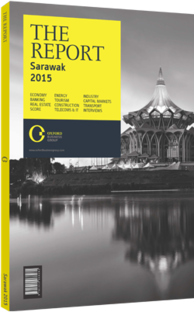Enhancing facilities and promoting Sarawak as a destination for medical tourism
The federal government is eager to see Malaysia unseat Singapore and Thailand to become South-east Asia’s premier health care tourism destination. This holds true not just for Kuala Lumpur and environs, but for Sarawak as well, as the state boasts many natural attractions to offer recuperating patients, at significantly lower costs than its competitors. Health care is of such importance to the economy that it has been deemed a national key economic area (NKEA). The aim of this assignation is to encourage more private investment in the health tourism sector, according to the Performance Management and Delivery Unit, which has announced 40 projects under this NKEA. One of these, “reinvigorating health care travel”, looks to draw the ASEAN and Middle East demographic of the international health travel sector to Malaysia’s shores. The country’s health tourism was worth RM683.92m ($208m) in 2013, up from RM566.65m ($172.4m) the previous year.
Private health care firms are being offered a range of incentives to establish operations in the country. For firms with a relevant operating licence that are registered with the Malaysia Healthcare Travel Council (MHTC) and that have obtained Ministry of Health (MoH) approval for establishment or expansion, the Malaysian Investment Tourism Authority grants 100% income tax exemption or equivalent on qualifying capital expenditure incurred within a five-year period. This allowance can also be used to offset 100% of the statutory income for each year of assessment, and any unused allowance may be carried forward to subsequent years.
GOOD REPUTATION: The international health tourism grapevine is already buzzing about Malaysia. The country came in third place for health care in InternationalLiving.com’s “Retirement Index 2014”, which described Malaysia’s health care as “among the best and cheapest in the world” and its medical expertise as “equal to or better than what it is in most Western countries”.
The number of health care tourists arriving in Malaysia more than doubled from 2008 to 2013, climbing from 374,063 to 770,134, according to MHTC statistics. The majority of patients arrive from Indonesia, the Middle East and North Africa. At the state level, around 1.9m tourists arrived in Sarawak between January and June 2014, according to Abang Johari Tun Openg, Sarawak state tourism minister, although it was unclear what proportion of this total were health care tourists.
To promote this sector abroad, in 2009 the MoH set up the MHTC, which also ensures that all participating Malaysian hospitals maintain international quality standards. In Sarawak, three health care facilities are registered with MHTC to participate in the council. These are Kuching Specialist Hospital, a KPJ Healthcare hospital, owned and managed by Johor Corporation; the private, not-for-profit Normah Medical Specialist Centre, which is fully accredited by the Malaysian Society for Quality in Health and the Joint Commission International; and Timberland Medical Centre, a private medical centre owned by Mestika Unik. The relatively new Borneo Medical Centre has not yet registered with the MHTC, but it looks to be positioning itself to attract medical tourists, primarily from West Kalimantan.
HOSPITAL-HOTEL COLLABORATION: Officials at the Sarawak Tourism Ministry and the State Economic Development Corporation (SEDC) have been urging private hospitals and hotels to collaborate on postmedical treatment packages to draw more health tourists – and their families – to Sarawak. These efforts have begun to bear fruit. In July 2014 Johari announced that a medical tourism facility would be launched at Damai Beach Resort in Santubong. He has also put forward the Batang Ai Longhouse Resort, located about four hours east of Kuching, as another possible posttreatment recovery facility.
“Sarawak is currently experiencing an upward trend in the arrival of foreign visitors seeking medical treatment,” Johari said. He added that, while most of the state’s foreign medical tourists were from Indonesia, the ministry had seen an increase in the number of domestic visitors from Peninsular Malaysia seeking specialised treatment at Sarawak’s private hospitals.
You have reached the limit of premium articles you can view for free.
Choose from the options below to purchase print or digital editions of our Reports. You can also purchase a website subscription giving you unlimited access to all of our Reports online for 12 months.
If you have already purchased this Report or have a website subscription, please login to continue.

